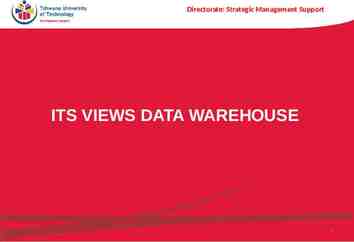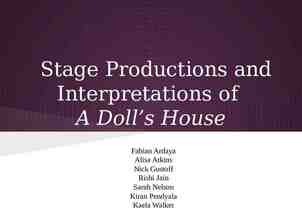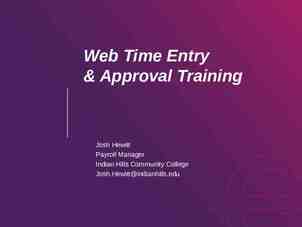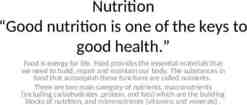Business Management Curriculum Module 3: Introduction to Budgets and
39 Slides4.47 MB

Business Management Curriculum Module 3: Introduction to Budgets and Financial Statements

Project Team: Ruby Ward, Professor, Utah State University Trent Teegerstrom, Associate Director of Tribal Extension, University of Arizona Karli Salisbury, Research Associate, Utah State University Kynda Curtis, Professor, Utah State University Staci Emm, Extension Educator and Professor, University of Nevada Reno Carol Bishop, Extension Educator and Associate Professor, University of Nevada Reno Acknowledgments: Vicki Hebb, reviewing content, and Russ Tronstad (University of Arizona) and Stuart Nakamoto (University of Hawaii), content. This material is based upon work that is supported by the National Institute of Food and Agriculture, U.S. Department of Agriculture, under award number 2013-38640-22175 through the Western Sustainable Agriculture Research and Education program under sub-award number EW14-017. USDA is an equal opportunity employer and service provider. Any opinions, findings, conclusions, or recommendations expressed in this publication are those of the author(s) and do not necessarily reflect the view of the U.S. Department of Agriculture. Each university is an affirmative action/equal opportunity institution

Outline Why do we need financial statements and budgets? Types of budgets Whole farm Enterprise Partial Cash flow statements Balance sheets and income statements

Reasons to Use Financial Statements and Budgets Key to understanding your business from financial point of view Help you make financial decisions Provide data needed for financial analysis

Types of Budgets Whole Farm Budgets Enterprise Budgets Partial Budgets

Types of Costs Variable Cost: When I plant another acre, my total cost will increase Seed, chemicals, labor, etc. Fixed Cost: Stays the same whether I plant another acre or not Depreciation, interest, long-term loans Insurance and property tax

Whole Farm/Ranch Budget A detailed listing of resources of the entire business and a plan of how resources will be used. Used appropriately when planning for an entire ranch operation or when a desired change in one part of the operation may affect several other parts of the operation.

Example of a Whole Farm Budget Revenue streams from the whole farm are totaled on top Operating costs are the variable costs for the whole farm

Example of a Whole Farm Budget Ownership costs are the fixed costs for the whole farm

Enterprise Budget The physical and financial planning for a specific enterprise (e.g., sheep, cattle, crops, etc.). Estimates the expenses and receipts for a set period of time under a set of production practices.

Basic Parts of an Enterprise Budget A section of yield, price, and income A section containing variable costs A section of fixed/overhead costs An estimate of profit or net income per cow or some other variable.

Example of an Enterprise Budget Enterprise Budget for 14' x 100' Tomato Bed Revenue Product Quantity Individual product Tomatoes Average Price Total Revenue number sold 450 Unit Price price size of unit per unit lbs 1.50 Total % of Revenue Total revenue 675.00 675.00 100% 100% Expenses Materials Labor Marketing Ownership Expenses (Fixed Costs) 129.00 530.00 20.00 125.00 Total Expenses 804.00 119% Net income before taxes (revenue minus expenses) (129.00) -19% Income and self employment taxes (19.35) -3% Net profit (109.65) -16% Revenue from an individual product is totaled on top. Expenses for the individual product are broken down into different sections. Variable expenses were broken down by Materials Needed Labor Marketing This is not the only way to lay out the variable expenses, as long as all expenses are included for the individual product.

Example of an Enterprise Budget Enterprise Budget for 14' x 100' Tomato Bed Revenue Product Quantity Individual product Tomatoes Average Price Total Revenue number sold 450 Unit Price price size of unit per unit lbs 1.50 Total % of Revenue Total revenue 675.00 675.00 100% 100% Expenses Materials Labor Marketing Ownership Expenses (Fixed Costs) 129.00 530.00 20.00 125.00 Total Expenses 804.00 119% Net income before taxes (revenue minus expenses) (129.00) -19% Income and self employment taxes (19.35) -3% Net profit (109.65) -16% Ownership (fixed) expenses include any overhead expenses divided by the amount spent on the product, such as The depreciation of equipment The rent allotted to that specific amount of land Use an enterprise budget to see whether a profit can be made producing a new product. In this example there is no profit. But adjustments can be made on paper!!

Ranch Operation Enterprise Budget General Composite Ranch Total INCOME Calves Cull Cows Culls Bulls Total Income Price Quantity 85.00 231 38.00 37 38.00 1 EXPENSES Variable Costs Lease and Grazing Fees Feed Livestock Expenses Labor Total Variable Expenses Cwt 5 10 15 98,350 14,042 527 112,918 Per AUY 266.16 38.00 1.43 306 8,510 11,090 35,918 12,169 67,687 23 30 97 33 183 Fixed Costs Average Fixed Costs Per AU Cash fixed (property tax & insurance) 40 14781 Depreciation 40 14781 Total Fixed Expenses 29,562 40 40 80 Total Expenses 97,249 263 Net Cash Return Over Variable Expenses 45,231 122.41 Net Ranch Income 15,670 42.41 This budget reflects a 370 head ranch with a 75% calving rate. Fixed costs have been broken down into Cash fixed expenses, which include but are not limited to taxes, insurance payments, water rights, and rent. Non-cash fixed expenses, including depreciation on equipment.

Ranch Operation Enterprise Budget General Composite Ranch Total Income 112,918 306 Total Variable Expenses 67,687 183 Total Fixed Expenses 29,562 80 Total Expenses 97,249 263 Net Cash return over variable expenses 45,231 122.41 Net Ranch Income 15,670 42.41 Returns Per cow Per calf sold Per cwt Returns above variable costs 51,017 138.06 220.46 44.09 Returns above Variable and Cash Fixed Costs 35,127 95.06 151.79 30.36 Returns above all costs 19,238 52.06 83.13 16.63

Partial Budget Examines the effect of minor adjustments in some portion of the business: Expanding an enterprise Alternative enterprises Different production practices

Example of a Partial Budget Partial Budget for a 14' x 100' Tomato Bed Suppose, Labor is not hired out to prep the ground. Instead you do it by yourself, and you buy a tiller to help with the amount of time it will take you. Additional Revenue What Quantity /unit Reduced Revenue Total What Total What Reduced Cost What Labor from hiring out Total Additional ost Quantity /unit 5 Quantity /unit 10 50 Quantity /unit Tiller 1 300 Total 300 That is a net difference of 250. This alternative would not be profitable. Another alternative would need to be considered. Total 50 Net Difference Total -250 300

Budget Summary The budget you will use depends on what you want to look at and what data you have available. You will need to make estimates, but over time find better information. Start simple and work up.

Cash Flow Statement The cash flow traces the flow of cash into and out of the business over a period of time, usually one year Deals only with cash transfers and breaks the year down by month. Allows the planner to anticipate credit needs and repayment schedules

Cash Flow Statements Cash Flow: Running cash balance of the cash inflow and outflow for a period. This is usually prepared annually, showing income, outflow, and cash available or needed for each month. Projected Cash Flow: Same as above, but completed at the start of the year to estimate the cash flow needs of the operation.

Projected Cash Flow

Why Cash Flow Analysis is Important

Monthly Cash Flow Summary Total Cash Income & Expenses Cash Inflow Cash Outflow 70,000 60,000 50,000 ( ) 40,000 30,000 20,000 10,000 Months Dec. Nov. Oct. Sept. Aug. July June May April March Feb. Jan. 0

Key Financial Statements Balance Sheets Income Statements

Why have Financial Statements Am I really making money? Is my business growing? Is my wealth increasing? Do I have resources I can use to grow?

Balance Sheet Assets - What I own (sheep, cattle, equipment, etc.) Even if there is a lien against it Don’t count leased assets Liabilities - What I owe to others Include the amounts of any assets financed Wealth - How much equity I have Also called net worth statement

A SAMPLE BALANCE SHEET

AN INCOME STATEMENT An accounting of income and expenses for a period of time for the purpose of calculating net income or net loss for the period Also called Profit & Loss Statement

Parts of an Income Statement Operating receipts Operating expenses Adjustments for changes in inventories /- Livestock /- Crops Adjustments for changes in capital items Gain or loss from sale of capital items Less depreciation

A SAMPLE INCOME STATEMENT

A Few Key Ratios

Know Where Your Business Stands

Why Keep Records? Help you make decisions You know where your business is Pay income taxes Apply for loans

Record Keeping Options On paper Excel Quicken Quickbooks

Questions What type of information is needed? How much information do you need and want for management purposes? Who is going to collect and develop the information?

Categories What kind of income, expenses, assets, liability transactions Category Account in chart of accounts Easy to set up "on the fly” Names can be letters or numbers

Reports & Graphs Cash flow Tax schedule Transactions Account balances Comparison Filtered Memorized Balance sheet

More Information and Tools RightRisk.org Budgeting Tools Templates Farm and Ranch Management Topics

Thank You!






